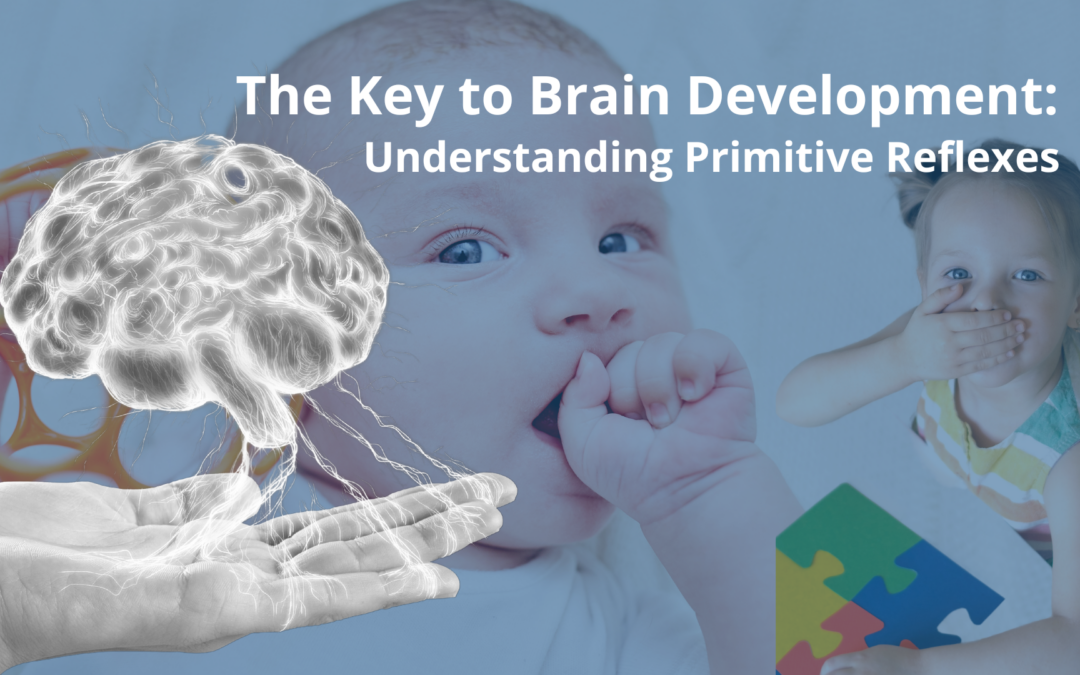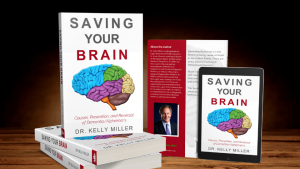When we think about brain development, we often envision complex cognitive processes and intellectual growth. However, there’s a fundamental aspect of brain development that often goes unnoticed but plays a crucial role in shaping our brains from the very beginning: primitive reflexes. These involuntary movements and responses are not just remnants of our evolutionary past; they are essential building blocks for a healthy and thriving brain. In this blog, we will explore why primitive reflexes are important in the development of the brain and how they contribute to a strong foundation for lifelong learning and well-being.
What Are Primitive Reflexes?
Primitive reflexes are automatic, involuntary movements and responses that originate in the brainstem and spinal cord. They are present from birth and are often exhibited during infancy. While these reflexes typically disappear as a child grows, they serve as critical milestones in early development.
Survival Instincts: Primitive reflexes are our earliest survival instincts. They are nature’s way of ensuring that a newborn can respond to the world around them, even before they have developed the ability to think and reason.
Developmental Milestones: These reflexes are crucial developmental milestones, marking the maturation of the nervous system. They lay the groundwork for more advanced motor and cognitive functions to develop over time.
Why Are Primitive Reflexes Important?
Motor Development: Primitive reflexes are the precursors to more complex voluntary movements. They help babies learn to coordinate their muscles and develop the motor skills needed for activities like crawling, walking, and fine motor tasks like grasping objects.
Sensory Integration: Primitive reflexes help infants make sense of the world around them. As they experience different sensations and stimuli, these reflexes aid in processing and integrating sensory information. This sensory integration is essential for later learning and cognitive development.
Brain Connectivity: The execution of primitive reflexes activates various parts of the brain, promoting the development of neural pathways. These early neural connections form the basis for more advanced cognitive functions, including memory, attention, and problem-solving.
Emotional Regulation: Primitive reflexes play a role in emotional regulation. By helping babies self-soothe and adapt to different stimuli, they contribute to the development of emotional resilience and coping skills.
Common Primitive Reflexes
Let’s take a closer look at a few common primitive reflexes and their significance:
Rooting Reflex: When a baby’s cheek is touched, they turn their head toward the stimulus, helping them find the breast or bottle for feeding. This reflex ensures the baby receives essential nourishment, supporting growth and brain development.
Moro Reflex: Often called the “startle reflex,” this response involves spreading the arms and then bringing them back toward the body when a baby experiences a sudden sensation like a loud noise or sudden movement. The Moro reflex is believed to aid in the development of spatial awareness and emotional regulation.
Grasping Reflex: When an object is placed in a baby’s palm, they will instinctively grasp it. This reflex is an early indication of developing fine motor skills and hand-eye coordination.
Primitive reflexes are like the building blocks of brain development, laying the foundation for more advanced cognitive and motor functions. They help infants adapt to their environment, integrate sensory information, and develop essential skills for life. While these reflexes typically disappear as children grow, their influence on brain development is profound and enduring.
Primitive reflexes and ADHD (Attention Deficit Hyperactivity Disorder) are two distinct but interconnected aspects of neurodevelopment. While primitive reflexes are early, involuntary motor responses that occur in infants, ADHD is a neurodevelopmental disorder that affects a person’s ability to focus, control impulses, and regulate hyperactivity. In recent years, there has been some interest in exploring the potential connection between retained primitive reflexes and ADHD.
Retained primitive reflexes and symptoms of ADHD
If primitive reflexes do not integrate properly during infancy, it might lead to developmental delays and difficulties in sensory processing, motor coordination, and attention. Addressing these reflexes through specific therapies may help individuals with ADHD improve their attention, focus, and self-regulation skills.
Many individuals with ADHD experience sensory sensitivities and difficulties in processing sensory information effectively. For example, they may be hypersensitive to certain stimuli (e.g., noise, textures) or have difficulty filtering out irrelevant sensory input.
These sensory processing challenges can contribute to distractibility and difficulties in maintaining attention. Some individuals with ADHD may find it hard to focus when they are overwhelmed by sensory stimuli in their environment.
Delayed Brain Maturation:
Some research suggests that individuals with ADHD may experience a delay in the maturation of certain brain structures, particularly in regions associated with attention and impulse control. This delay in brain development may contribute to the characteristic symptoms of ADHD, which often emerge in childhood and may persist into adulthood.
Watch our Primitive Reflexes Videos
The Research
The Emerging Neurobiology of Attention Deficit Hyperactivity Disorder: The Key Role of the Prefrontal Association Cortex
Neurodevelopmental Abnormalities in ADHD



